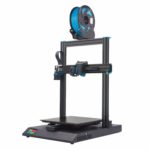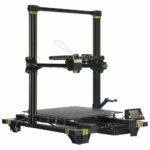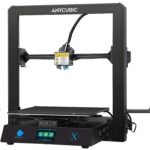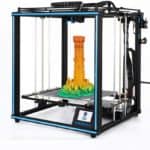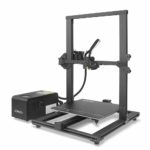Best Large 3D Printer in 2022
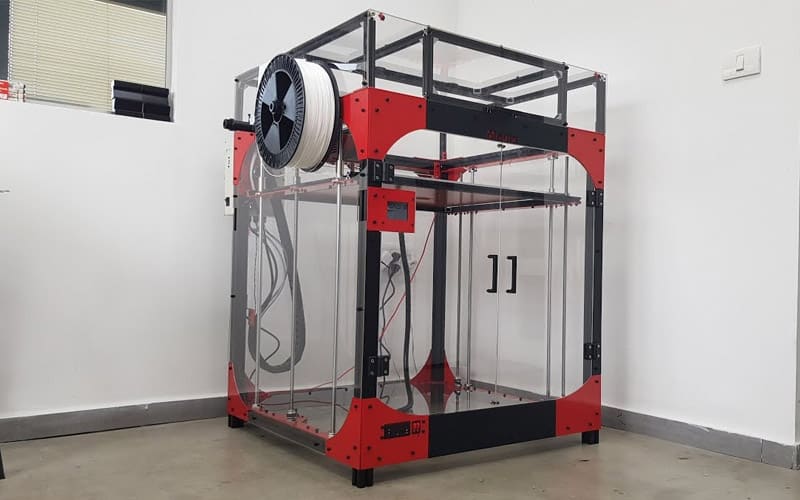
A 3D printer capable of churning out large-scale objects isn’t an attribute found in every model on the market, and until not long ago, it was very much limited to industrial-grade rigs. Fortunately, large object printing no longer sits behind a hefty price tag as more and more affordable printers with generously sized build volume hit the market each year.
As specifications go, a large build volume is among the most versatile additions to any 3D printer’s toolkit, whether that’s for enthusiastic home tinkerers eying up more ambitious designs or a small business prototyping their latest flagship product.
With build volumes that put to shame the usual form factor of hobbyist printers, these supersized printers can confidently produce models or churn out multiple objects at a time to turn even a modest setup into a conveyor belt 3D printing powerhouse.
Much like standard 3D printers, wading through what’s out there and making an informed choice can be taxing. With that in mind, we’ve pulled together a selection of top recommendations for those in the market for one of the best large 3D printers currently out there.
Products at a Glance
Best Large 3D Printer in 2022
- 300 mm x 300 mm x 400 mm build volume
- E3D Titan Aero Volcano-style hot end
- 100 micron resolution
- Fast speeds for an FDM printer
- Heated bed
- Tricky spool holder
- No automatic bed leveling
- Ultrabase Pro print bed
- 400 mm x 400mm x 450 mm build volume
- Compatible with a wide range of materials
- Quick assembly
- Not so automatic bed leveling
- Ultrabase print bed
- 300 mm x 300 mm x 305mm build volume
- Ease to assemble and use
- 50 to 300 micron layer resolution
- Manual bed leveling
- No Wi-Fi connectivity
- Loud operational noise levels
- 330 mm x 330 mm x 400 mm build volume
- Aluminum heated bed
- Semi-automatic bed leveling
- 100-400 micron resolution
- Filament sensor and run-out detection
- DIY-style assembly process
- Bed leveling may be too involved for beginners
- Low cost
- 300 mm x 300 mm x 400 mm build volume
- Quick and easy assembly
- Tempered glass heated bed
- Filament sensor
- Standalone PSU/touch screen unit
- No automatic bed leveling
How to build a large 3D printer
The best thing about 3D printers is once you have one, you can, in theory, use it to make another one. Ad infinitum. Granted it may not be as quick as a replicator in Star Trek but you could set your normal sized 3D printer to work making a lot of the parts for a new super-sized version of itself. Plastic evolution in front of your very eyes.
You are still going to need things such as stepper motors, drive belts, and microswitches but a quick google will find you the parts you need. Then you just need to build the frame, it it all together and… start to build an even bigger one. |It won’t be long before you are building your next house!
How much does it cost to build a large format 3D printer
These days you can pick up a decent large-format 3D printer for around $600 with some savvy shopping. If you are determined to make your own we think it’s a good idea to spend not much more than half of that. If you are going to spend more you might as well just buy one for all the convenience of just taking it out of the box, getting a warranty, and so forth. Obviously, if you are hell-bent on it for hobbyist/educational purposes then money might not be the driver, but if you are just looking to save some cash then don’t get sucked into an endless money pit would be our advice.
How to 3D print large objects on small printer
This is one of those questions where the answer should be obvious but there are a few ways to skin the plastic cat. The easiest one is to get to grips with your slicer software. Something like Cura is a great piece of software to learn more than the basics of. Then you can start to split your largest models into small ones that will fit easily on your build plate, print them and assemble them in post. You can of course just chop them up in the slicer then get the glue out, but you will soon pick up new techniques to make this even easier, such as putting holes in one side of the model and extruding sections to fit in the hole on the other side so that the pieces can slot together in the correct place. Quality of life stuff, but learning your slicer will make a huge difference to your journey.
Our Verdict
A top pick among FDM printers, the Artillery Sidewinder X1 V4 also has the chops to hit the top of our recommendations as one of the best large 3D printers. Reasonably priced with a roomy build volume and an excellent all-around features set, any beginner or enthusiast will be satisfied with the Artillery Sidewinder X1 V4.
In the runner-up spot, we have the Anycubic Chiron. Anycubic’s superb Ultrabase Pro bed combines with a massive build volume, broad material compatibility, and ease of use to offer a reliable option for those aiming for large form prints.
In the mid-range bracket, we recommend Anycubic Mega X. It may lack some of the features of the Chiron but remains a competent large 3D printer with plenty to offer on the feature front.
The Tronxy X5SA should suit those looking for value alongside a large build volume, semi-automatic bed leveling, and a heated bed. This one is for the tinkers, though, so first-timers are better off with another pick. Lastly, those on a budget should consider the Longer LK1.
We’ll now wrap up our guide to the best large 3D printers. The comments section below is open, so do drop in with any questions or concerns if you have any.


